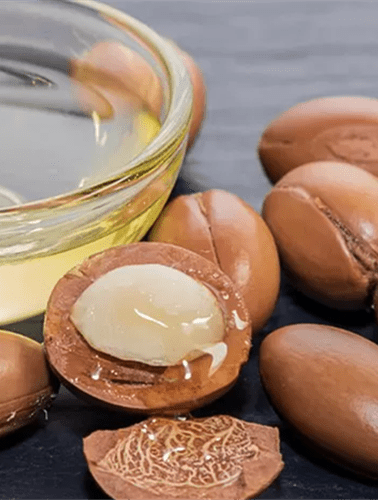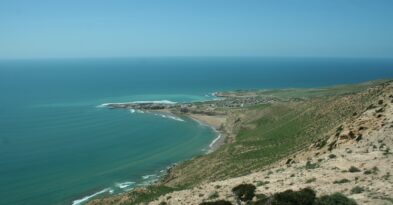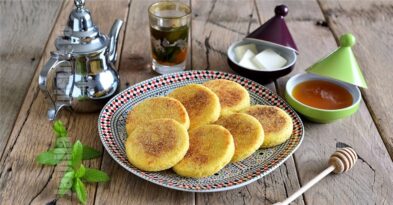Moroccan Argan Oil
While Argan oil is a recent phenomenon in the West, it is, in fact, a centuries-old tradition in Morocco. But as you cannot build a house from the roof down, let’s start with the fundamentals: what exactly is Argan?

The Argan tree
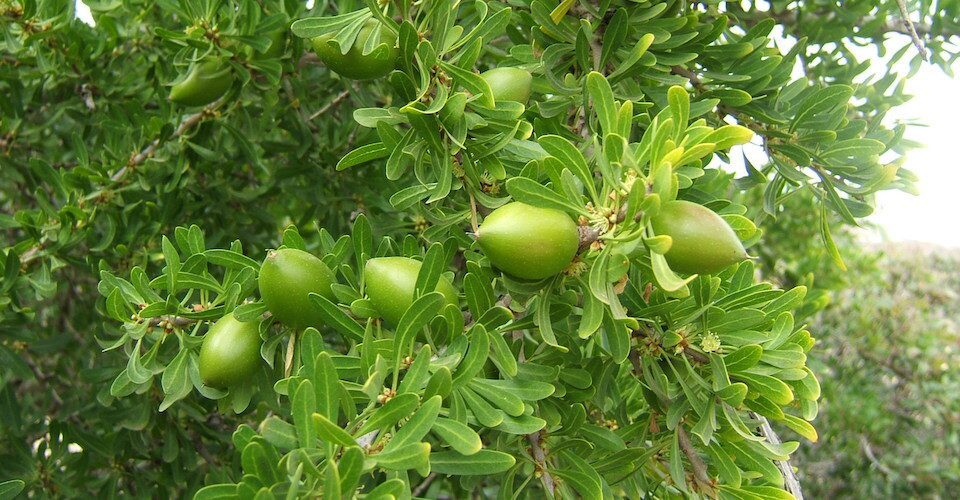
Two frequently overlooked facts about Argan are crucial to understanding its value: first, the tree thrives primarily in arid regions; second, the oil comes from a fruit.
This fruit is oval, similar to an olive, with a greenish-yellow hue and a hard shell. Its pulp is bitter and unpleasant-tasting, making it generally unfit for human consumption and typically used as animal feed. Inside lie two or three almond-like kernels. It is exclusively from these kernels that the renowned Argan oil is extracted. The extraction process is incredibly intensive, requiring roughly 100 kilograms of fresh fruit to yield a single liter of oil—just imagine the labor involved!
There are two primary methods for obtaining Argan oil: a modern industrial process and a traditional one. It’s worth noting that several urban myths surround the traditional production of this “liquid gold of Morocco.”
Industrial Process for Obtaining Argan Oil

The oil extraction process involves three key stages: first, removing the dried pulp from the argan fruit; second, cracking the nut to extract the kernels; and third, grinding these kernels to release the oil.
The industrial method is fully mechanized. Specialized machines are deployed for each stage, with operators providing support. For instance, in the first stage, a machine scores the pulp to facilitate its removal. An operator may intervene if the machine fails to achieve a clean separation. The same human-machine collaboration applies to the nut-cracking phase.
As for the final stage, the kernels undergo a roasting process before being milled, ultimately yielding the finished Argan oil.
Traditional Process of Obtaining Argan Oil

The traditional method of extracting Argan oil can be categorized into two distinct methods, which differ primarily in the first step of separating the fruit’s pulp.
The first method relies on nature: the fruit is left to dry naturally after falling from the tree, making the pulp easy to remove. The second method involves an unusual collaborator—goats. They gladly consume the fleshy pulp and later regurgitate the undigested inner nuts.
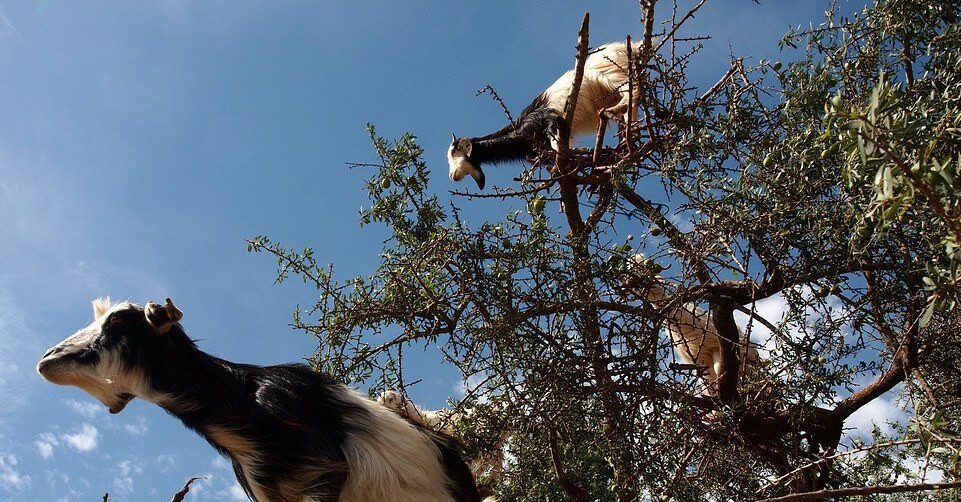
You might wonder how goats manage to reach the fruit, especially since the Argan tree must grow to about three meters tall before it even begins to leaf. This seeming impossibility has a simple explanation: the tree thrives in arid regions where vegetation is scarce. With little else to eat, our arboreal goats have become adept climbers, scaling the branches to feast on the leaves and fruit.
Once the pulp is removed (by either method), the nuts are cracked open with a stone to extract the kernels. These kernels are then lightly roasted over a wood fire. Next, they are ground into a thick paste using a mill. Water is added to the paste, which is then meticulously kneaded by hand to separate the oil—an immensely labor-intensive process. It can take over six hours of work to produce just one liter of oil. This traditionally prepared oil is commonly used for both culinary and cosmetic purposes, and its production remains an exclusive and time-honored craft practiced by Berber women.
Authentic Argan oil is produced in the region between Essaouira and Agadir, extending into the Anti-Atlas, where many women’s cooperatives are based. Prices typically range from around 25 euros per liter for lower quality to 40 euros or more for superior quality, especially when purchased directly from these cooperatives.
Urban Legend About the Process of Obtaining Argan Oil
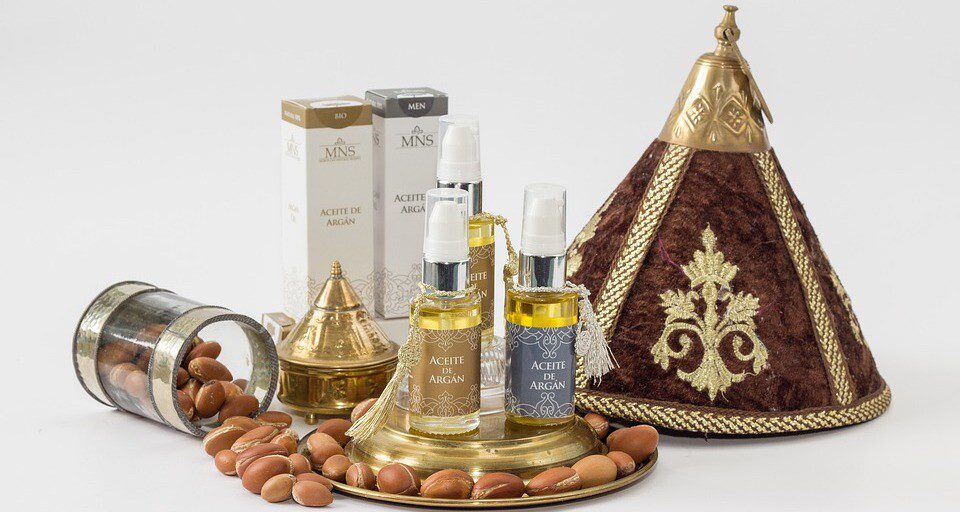
A widespread belief—even among some Moroccans—holds that goats can separate the pulp from the argan fruit in a rather different way: by defecation. Yes, you heard that correctly. The persistent urban legend claims that goats swallow the fruit whole, digest the pulp, and then pass the hard inner nut intact in their droppings. This myth is often used to explain why some argan oil has a particularly strong, unpleasant odor.
However, goats have no need to undergo the uncomfortable process of passing undigestible matter for one simple biological reason: they are ruminants. They consume the fruit, pulp and all, then during rumination (chewing their cud), they simply regurgitate and spit out the hard nuts that their stomachs cannot break down.
Fruits of Argan
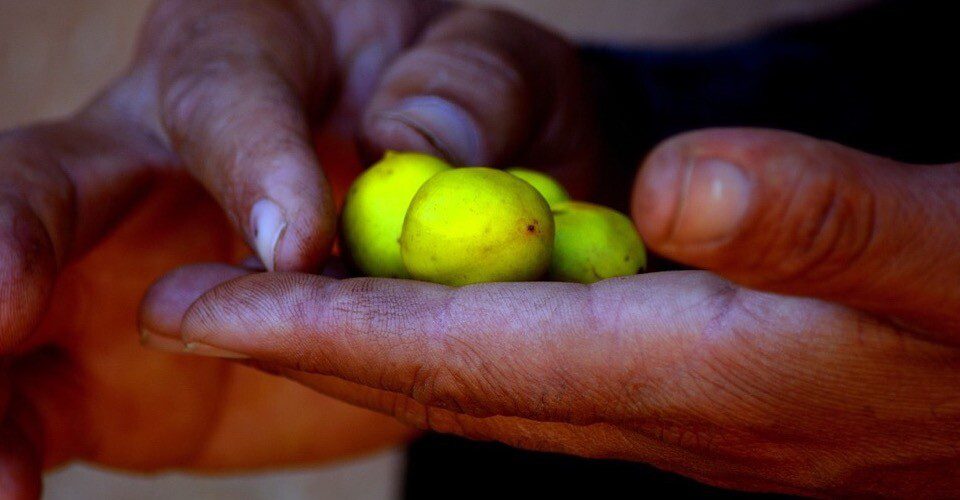
Regarding the distinctive smell of Argan oil—which is indeed quite common—the explanation is straightforward. Once cracked, the raw Argan kernel releases an unmistakable and rather pungent aroma. This is precisely why the kernels are typically roasted beforehand; the process transforms their scent into something pleasantly reminiscent of hazelnuts.
However, the oil you purchased may have been cold-pressed and intended solely for cosmetic use. Artisanal, cold-pressed oils often retain more of this natural odor. In contrast, the industrial process usually involves both roasting and an additional deodorization step, resulting in a much milder oil.
Uses of Argan Oil
Argan oil is a remarkably versatile product deeply integrated into Moroccan life. Its uses extend far beyond cosmetics, also serving as a valuable food ingredient. Below are its primary applications:
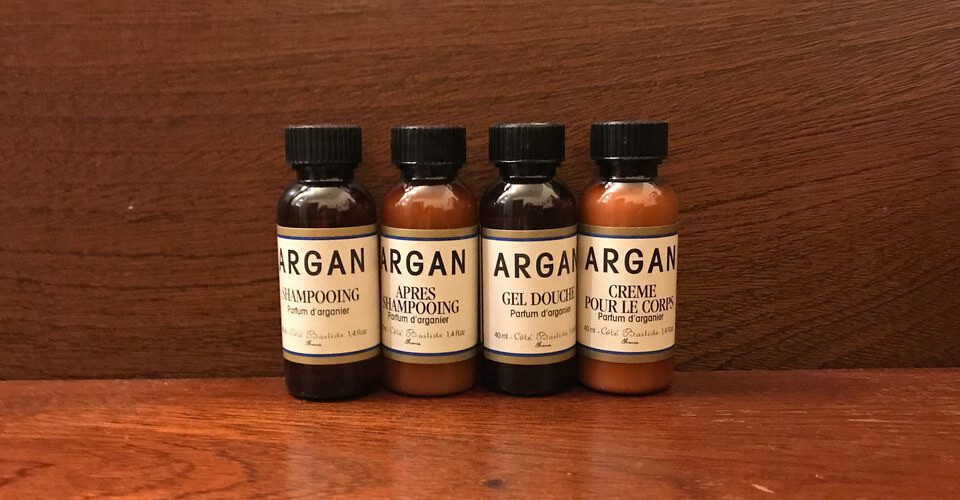
Cosmetic Use:
Scientifically proven to moisturize, protect, and regenerate the skin, it also boasts anti-wrinkle properties. When applied to hair, it nourishes and hydrates, imparting shine and softness. A mixture of Argan oil and a few drops of lemon juice can revitalize and add shine to nails. It is also popularly used as a massage oil and is a common feature in Hammams and massage centers throughout Morocco.
Culinary Use:
Frequently used in cooking, Argan oil is known to help reduce cholesterol and prevent cardiovascular ailments. A common way to enjoy it is mixed with ground almonds and spread on bread, offering a flavor reminiscent of nougat. It is also blended with almond paste and honey to create Amlou, a delicious paste that is rarely found outside the Argan-producing regions.
Contact us for more travel information!

